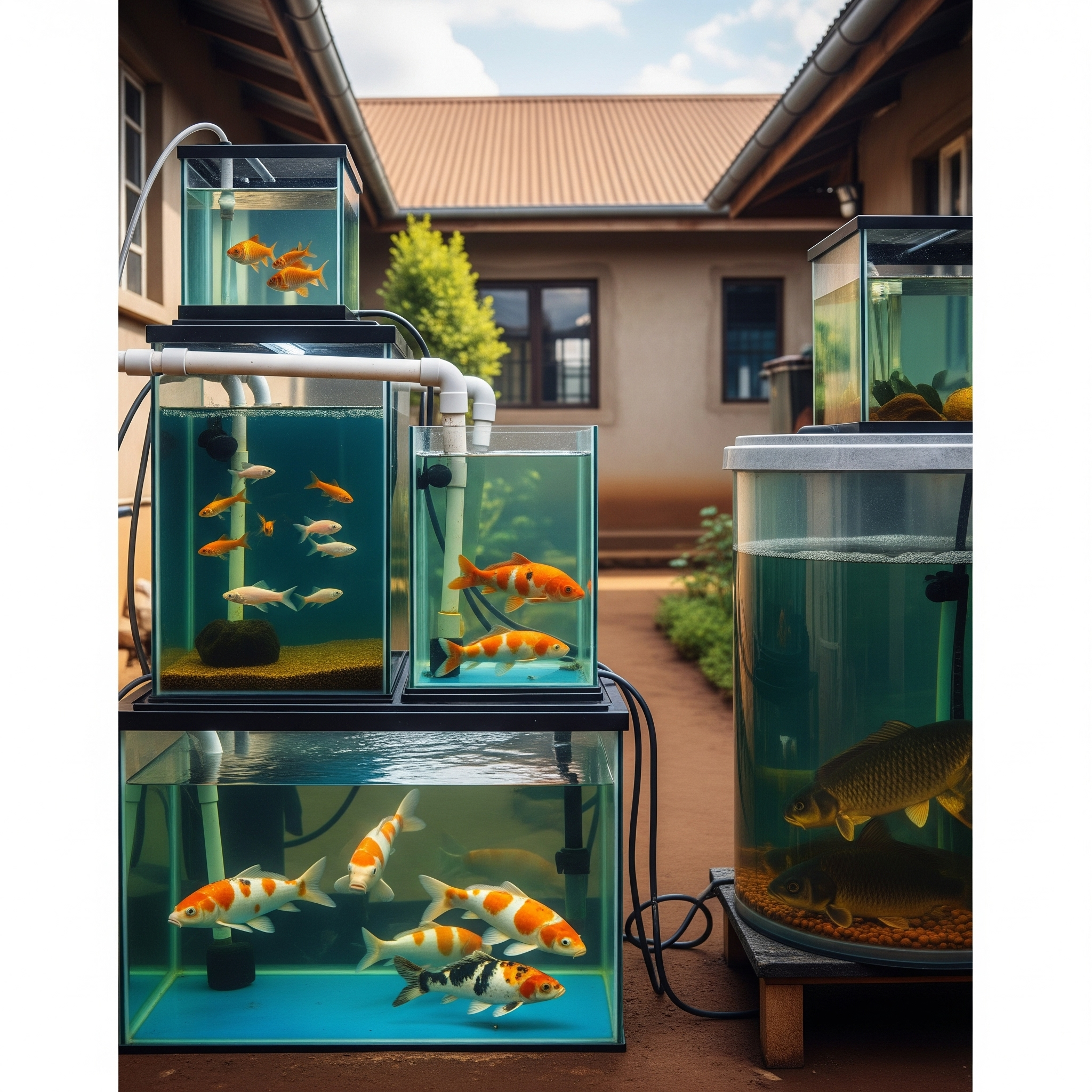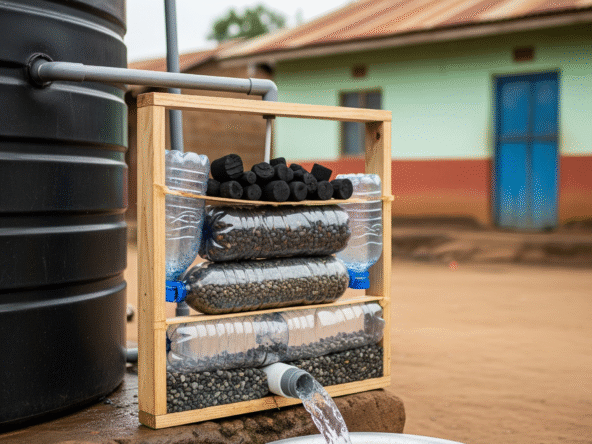As aquaponics and backyard fish farming gain popularity in Kenyan homes and rental compounds, correctly sizing your fish tank is essential. Proper sizing ensures balanced water quality, healthy fish, efficient integration with overflow systems, and streamlined maintenance.
Why Tank Size Matters
The volume and dimensions of your fish tank affect:
- Stocking density and fish health
- Water quality, circulation, and oxygenation
- Compatibility with overflow reuse systems in aquaponics setups
- Long-term sustainability of integrated water loops
A well-sized tank not only supports your aquaculture but also doubles as a nutrient source for gardens, especially when linked to overflow capture systems described in Tank Overflow Reuse in Aquaponics Setups.
Recommended Tank Volumes for Different Compound Sizes
| Plot Type | Suggested Volume | Ideal Tank Format |
|---|---|---|
| Small family (1–4 people) | 500–1,000 L | Plastic or repurposed IBC tanks |
| Medium compound (5–8 units) | 1,000–2,000 L | Round poly tanks or basic concrete |
| Rental compounds (8–20+) | 3,000–10,000 L | Reinforced concrete or modular tank units |
If space is tight, opt for rectangular tanks to maximize footprint efficiency, as discussed in Rectangular vs Round Tanks in Kenya.
Key Considerations for Tank Sizing
- Fish species & stocking
Tilapia typically need 100–150 L per adult; adjust volume accordingly. - Physical footprint
Use vertical or under-deck space. For example, locating tanks under timber decks works. - Overflow and buffer capacity
Tanks should exceed standard volume by 10–20% to handle stormwater capture, aligning with recommendations in Overflow Piping Design. - Pump flow compatibility
Aim for pumps that can circulate the entire tank volume hourly check Sizing Pumps for Irrigation.
Tank Types Commonly Used
- IBC Tanks (1,000 L)
Easy to repurpose and ideal for compact spaces; see IBC Tank Use in Kenyan Homes - Concrete Tanks (2,000–10,000 L)
Customized shape and durable suitable for larger compounds - Poly Tanks (500–5,000 L)
UV-stable and suited for rooftop or backyard applications
Ensure your tanks are secure and hygienic using methods from Tank Shelters and Lockable Enclosures.
DIY: Calculating Your Tank Volume
Use this simple formula:
Length × Width × Height (m) × 1,000 = volume in litres
Example: 2 m × 1 m × 1 m = 2,000 L
Correct fish tank sizing is more than spatial planning it supports water quality, overflow management, nutrient cycling, and compound design. Begin with a tank sized for your current needs, then scale or integrate additional systems like fish tank filters, solar-powered aeration, and raised garden beds as you grow.
Explore More:



